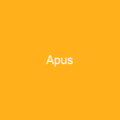Leo Minor is a small and faint constellation in the northern celestial hemisphere. It lies between the larger and more recognizable Ursa Major to the north and Leo to the south. There are 37 stars brighter than apparent magnitude 6.5 in the constellation; three are brighter than magnitude 4. 5. The constellation also includes two stars with planetary systems, two pairs of interacting galaxies, and the unique deep-sky object Hanny’s Voorwerp.
About Leo Minor in brief

5, and 37 stars with a magnitude brighter than 6.5. 46 Leonis Minoris, an orange giant of magnitude 3. 8, is located some 95 light-years from Earth. At magnitude 4. 4, Beta Leonis Minor is the second-brightest star and the only one of the constellation with a Bayer designation. The brightest star is 21 Leonis Majoris, a rapidly rotating white main-sequence star of average magnitude 4.5, which is located 95 light-years away. It has been described as having “dubious claims to a separate identity” by Patrick Moore. In Chinese astronomy, the stars Beta, 30, 37 and 46 LeonisMinoris made up Neiping, a court of Judge or Mediator or Shi “Court Eunuch” or were combined with stars of the neighbouring Leo to make up a large celestial dragon or State Chariot. The stars of Leo Minor had been termed Al Thibā’ wa-Aulāduhā “Gazelle with her Young” on a 13th-century Arabic celestial globe, recovered by Cardinal Stefano Borgia and housed in the prelate’s museum at Velletri. In 1870, Richard A. Proctor gave the constellation the name Leaena “the Lioness”
You want to know more about Leo Minor?
This page is based on the article Leo Minor published in Wikipedia (as of Nov. 03, 2020) and was automatically summarized using artificial intelligence.







